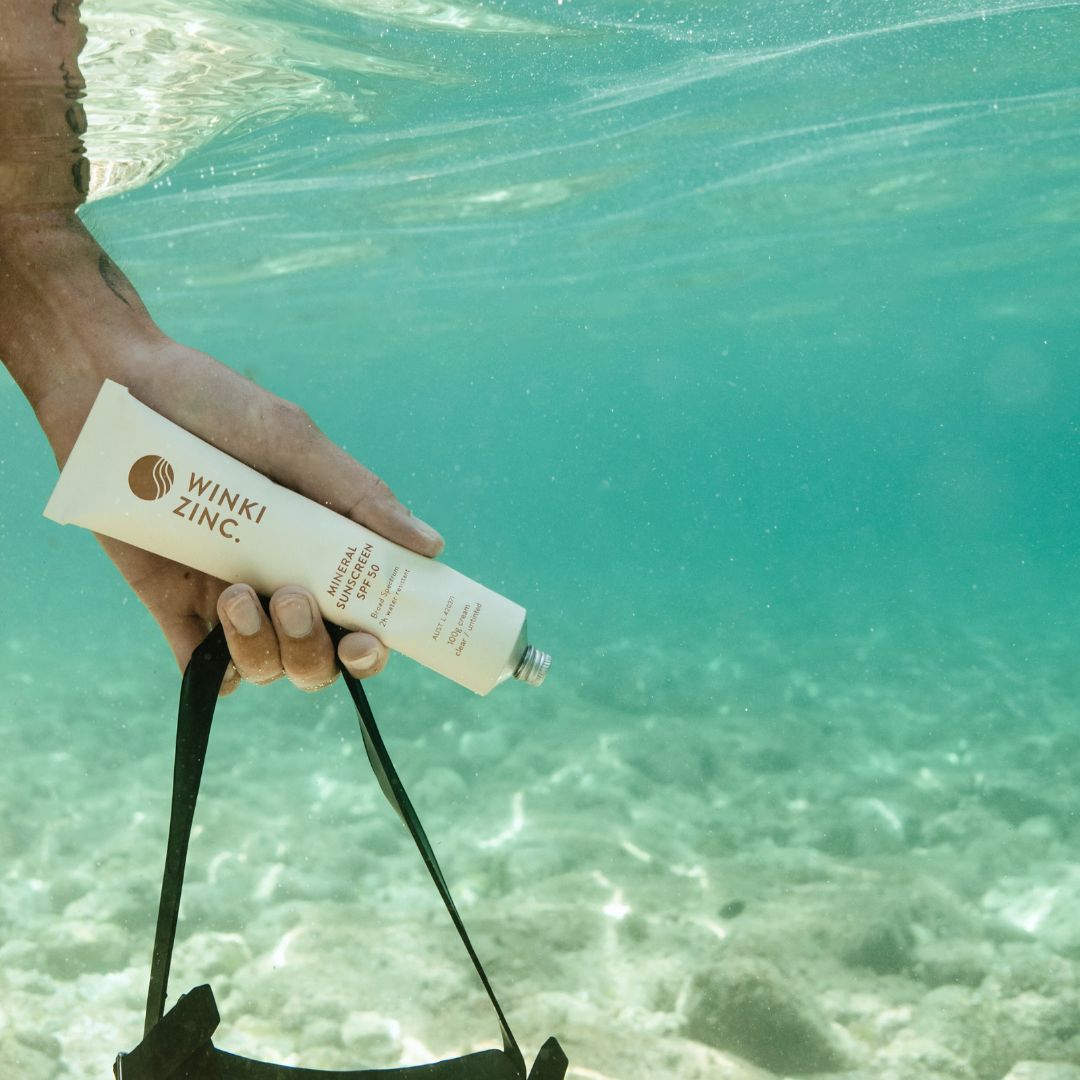While the term ‘reef safe’ has become a popular catchphrase in the sunscreen industry, it’s meaning remains somewhat ambiguous leaving consumers perplexed about its credibility.
At Winki Zinc, we see it as our responsibility to create products that have the least impact on our marine ecosystems, particularly our coral reef. While we acknowledge the importance of ‘reef safe’ practices, we believe it is essential to go far beyond this simplistic label. Here, we try to clear some of the murky water surrounding ‘reef safe’ claims and to provide you with a guide as to how to choose best sunscreen. History of “Reef Safe”
History of “Reef Safe”
The history of ‘reef safe’ can be traced back to the 2010s when studies revealed the detrimental effects of oxybenzone and octinoxate on coral reefs. In response, Hawaii became the first state to ban the sale of sunscreens containing these chemicals in 2018. This decision sparked a movement towards ‘reef safe’ sunscreens, prompting brands across the world to reformulate their products with different ingredients and subsequently adopt the term ‘reef safe’.
However, questions linger regarding the safety of newer ingredients since the 2018 ban. One suspicious ingredient that still frequents so-called reef safe sunscreens is Octocrylene, which is currently under scrutiny for its potential impact on marine life and human health.
Sunscreen formulas containing non nano titanium dioxide or zinc oxide (natural mineral ingredients that provide a physical barrier to the sun) are widely accepted for their effectiveness in protecting against UVA/UVB rays without harming coral. However, the absence of a universal testing and certification still leaves the term ‘reef safe,’ open to interpretation.

The problem with the term ‘reef safe’
Despite no universal certification or test for ‘reef safe’ products, brands get away with (and capitalise on) any number of claims without substantiating them. Considering this, we believe calling a product “reef safe” is in fact greenwashing, misleading consumers and undermining environmental commitments
Going beyond ‘reef safe’
Transparency:
We advocate for transparency and complete information for consumer empowerment. We believe that consumers should (be able to?) read the full ingredient list of any product they buy, especially sunscreen.
Did you know, sunscreen labels do not need to list their full ingredients? Legally, they are only required to list their active ingredients (the ones that provide the SPF). This means that anything could be lurking in a formula/product- preservatives, artificial fragrances, petroleum oil and palm oil are all common hidden sunscreen ingredients.
We encourage consumers to seek brands that include their full ingredients list, as well as provide comprehensive access to information about their ingredient origins and formulations.
Packaging:
We don’t stop at sunscreen! We emphasize the importance of sustainable packaging in assessing a sunscreen's environmental impact. With tons of plastic entering our oceans every year, harming marine life and creating a toxic soup, it feels like a no brainer to avoid plastic completely.
Many brands advertise their plastic packaging as 'recyclable" but dive a little deeper here and statistics will show that only 13% of plastic gets recycled in Australia. Metal packaging in comparison, has a recycle rate of 75%. Additionally, sunscreen products often use multi-layered plastics and while technically recyclable, they need special facilities to do so and these are not widely accepted at most recycling centres.
TIP: Look for brands that use either aluminium, glass or compostable cardboard packaging and avoid plastic if possible.
So… What kind of “Reef Safe” is YOUR sunscreen?
Here we have come up with two different approaches to “Reef Safe” and how you can spot them:
- The Bandwagon Reef Safers:
These brands simply slap ‘Reef Safe’ along with a cute little fish icon onto their packaging when the product does not contain either Oxybenzone or Octinoxate. But be wary of what other toxic ingredients might be included, as well as their chosen packaging materials.
Avoid sunscreens that:
- Provide little or no information about how/why their product is reef safe
- Use plastic packaging
- Hide their full ingredient list
- The Beyond Reef Safers:
This is what we call Reef Conscious. These brands go beyond mere labelling and prioritise transparency, responsible ingredient sourcing, sustainable packaging and demonstrate commitment for environmental stewardship
Look for brands that:
- Provide clear information about their Reef Safe approach
- List all the ingredients
- Use responsible packaging that is ideally plastic free
- Go above and beyond to care for the environment beyond their sunscreen formula
Brand examples: Winki Zinc, Sunbutter, Sunslayer
Introducing ‘Reef Conscious’
In light of the unsubstantiated number of ‘reef safe’ claims, we at Winki Zinc prefer the term ‘reef conscious’. This approach acknowledges the multiple efforts to minimise harm to coral reefs while also recognising the need for further research on the long-term effects of widely used sunscreen ingredients. By hand-on-heart embracing ‘reef consciousness’, we aim to foster honesty, transparency and education to both the sunscreen industry and consumers.
We know this isn't as easy to digest as a cute coral icon, but we are on a mission to be the most honest people in the business, and to educate you as consumers about the realities of what we do within the industry we inhabit. Together, let's embark on the journey ‘beyond the label’ and towards a more informed and conscious approach to sun protection.
RESOURCES:



